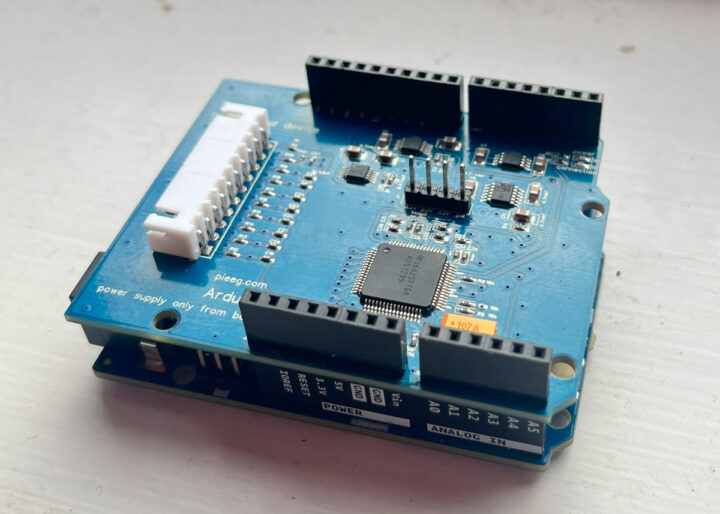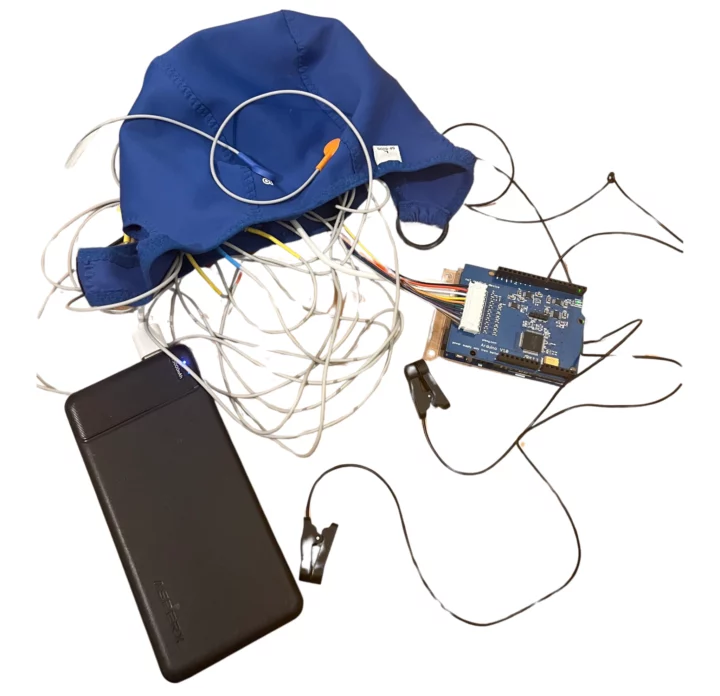PiEEG has launched the ardEEG shield specially designed for the Arduino UNO R4 WiFi and capable of measuring biosignals such as those used in electroencephalography (EEG), electromyography (EMG), and electrocardiography (ECG).
PiEEG, led by Ildar Rakhmatulin, Research Associate at Heriot-Watt University in Edinburgh, launched the PiEEG shield for Raspberry Pi to enable brain-computer interfaces last year, and now the company has been working on the equivalent design for Arduino with the ardEEG shield equipped with eight channel taking input from wet or dry electrodes.

ardEEG shield key features and specifications
- ADC – Texas Instruments ADS1299 Analog-to-Digital Converter for biopotential measurements
- Supported board – Arduino UNO R4 WiFi
- 8 channels for connecting wet or dry electrodes (Electrodes are positioned according to the International 10-20 system)
- Host interface – Arduino headers with SPI used for data transfer with a frequency from 250 SPS to 16 kSPS and a resolution of 24 bits per channel
- Programmable signal gain – 1, 2, 4, 6, 8, 12, 24
- Ability to measure impedance
- Power Supply + Safety – The device must operate only from a battery – 5 V. Complete isolation from the mains power is required.! The device MUST not be connected to any kind of mains power, via USB or otherwise.
- Dimensions – Arduino UNO shield

The ardEEG shield is not a medical device and, as such, has not been certified by any government regulatory agency, so it’s better suited to the education and research markets although users can still create their own brain-computer interface projects for example to control robotic arm manipulation or for health monitoring.
PiEEG provides an Arduino sketch to read data from the electrodes plus a Python program for signal processing and visualization. Some examples include chewing and blinking and EEG signals monitoring, You’ll find everything to get started on GitHub. The video below also shows a short demo of the solution.
PiEEG sells the ardEEG shield on Elecrow for $240, but that does not include any electrodes so you’d have to bring your own or spend another $290 for the Cap EEG kit that you can place on the head of the subject. Additional details may also be found on the product page.

Jean-Luc started CNX Software in 2010 as a part-time endeavor, before quitting his job as a software engineering manager, and starting to write daily news, and reviews full time later in 2011.
Support CNX Software! Donate via cryptocurrencies, become a Patron on Patreon, or purchase goods on Amazon or Aliexpress




